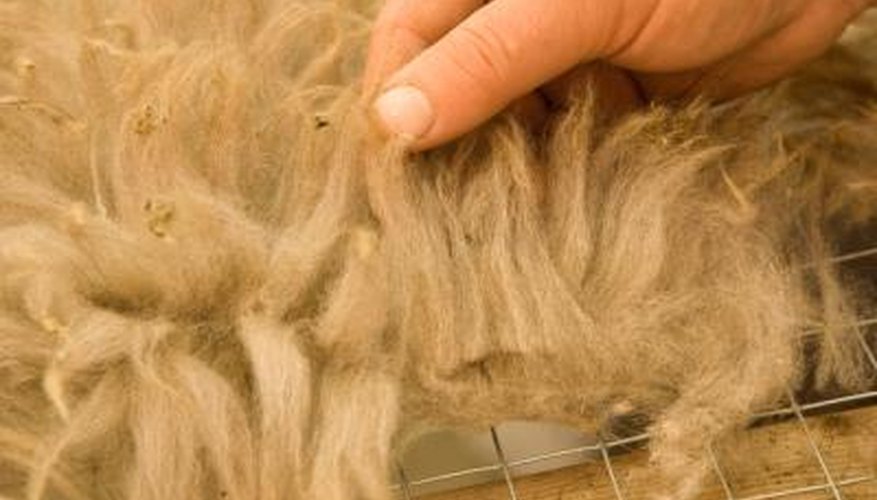A fabric or fibre blend is two or more types of yarn twisted, spun or woven together. There are a number of advantages to blending fibres in textiles. Often the weaknesses of one fibre are countered by the strengths of another. Sometimes two natural materials are blended, but usually blends are a mix of natural and synthetic. Wool and nylon are frequently combined creating benefits over either fibre alone.
Durability
Durability, or strength, is a desirable quality in textiles. Wool tends to be a soft fibre, the natural strands wearing and pulling apart with use and cleaning. Nylon blended with the wool slows the wear, adding length of life to the fabric or yarn. A blend of nylon and wool is often used for carpet for this reason. Wool socks are frequently made of a wool-nylon blend to increase durability while retaining softness and warmth.
- Durability, or strength, is a desirable quality in textiles.
- Nylon blended with the wool slows the wear, adding length of life to the fabric or yarn.
Felting and shinkage
Wool, due to the shape and nature of the natural fibres, is known to shrink and "felt," or mat together, easily. This happens when the wool is washed or comes in contact with water. The addition of nylon fibres limits this tendency. It also reduces the felting, or matting, that occurs when a garment is worn or used. The underarms of a sweater, for example, can become felted from use. A wool-nylon blend will prevent this.
- Wool, due to the shape and nature of the natural fibres, is known to shrink and "felt," or mat together, easily.
- The addition of nylon fibres limits this tendency.
Skin irritation
While wool fabrics are soft, garments made of pure wool are known for their scratchy texture when worn next to the skin, especially when made of the coarser wool fibres. The wool can cause skin irritation in sensitive individuals. The addition of nylon allows the fabric to maintain its softness without irritating the skin. A wool-nylon blend made of lightweight, fine wool can be worn by most individuals without any "itch."
- While wool fabrics are soft, garments made of pure wool are known for their scratchy texture when worn next to the skin, especially when made of the coarser wool fibres.
- A wool-nylon blend made of lightweight, fine wool can be worn by most individuals without any "itch."
Economic cost
Pure wool, or any natural fibre such as silk or cotton, tends to cost more than synthetic or mixed blends. The ability to mix wool with a synthetic such as nylon helps reduce the purchase price of the fabric or yarn. This cost savings is magnified when combined with longer life due to the extra durability, and the reduction in loss due to shrinkage or felting. The combination of factors creates greater economic benefit.
- Pure wool, or any natural fibre such as silk or cotton, tends to cost more than synthetic or mixed blends.
- The ability to mix wool with a synthetic such as nylon helps reduce the purchase price of the fabric or yarn.
